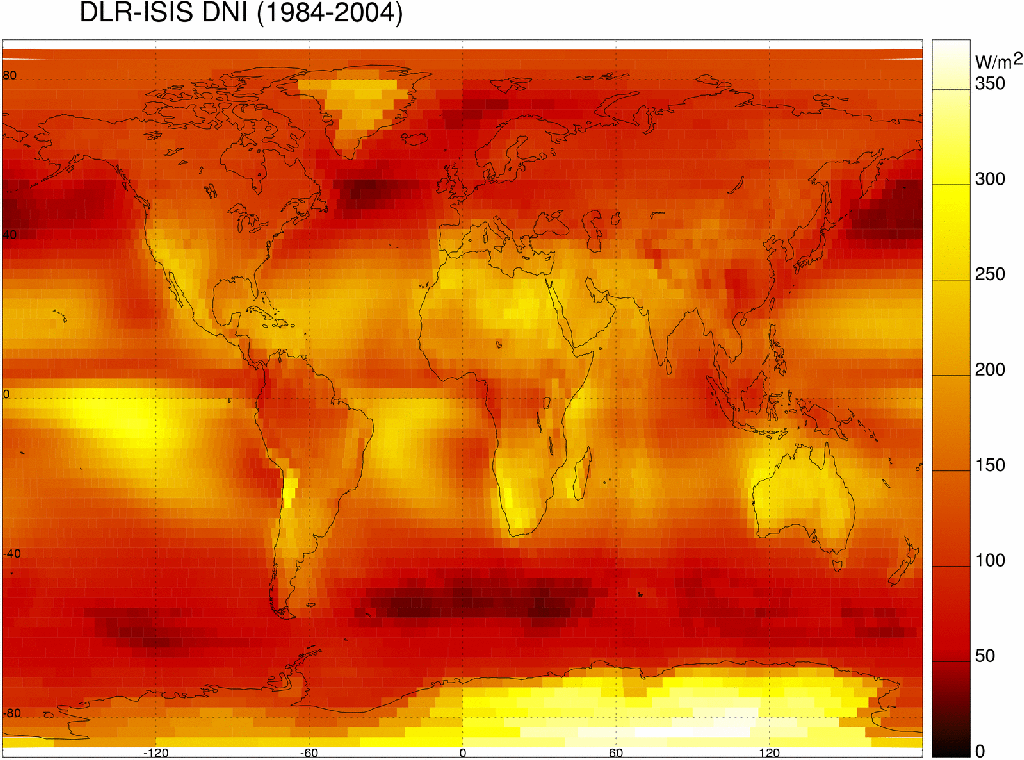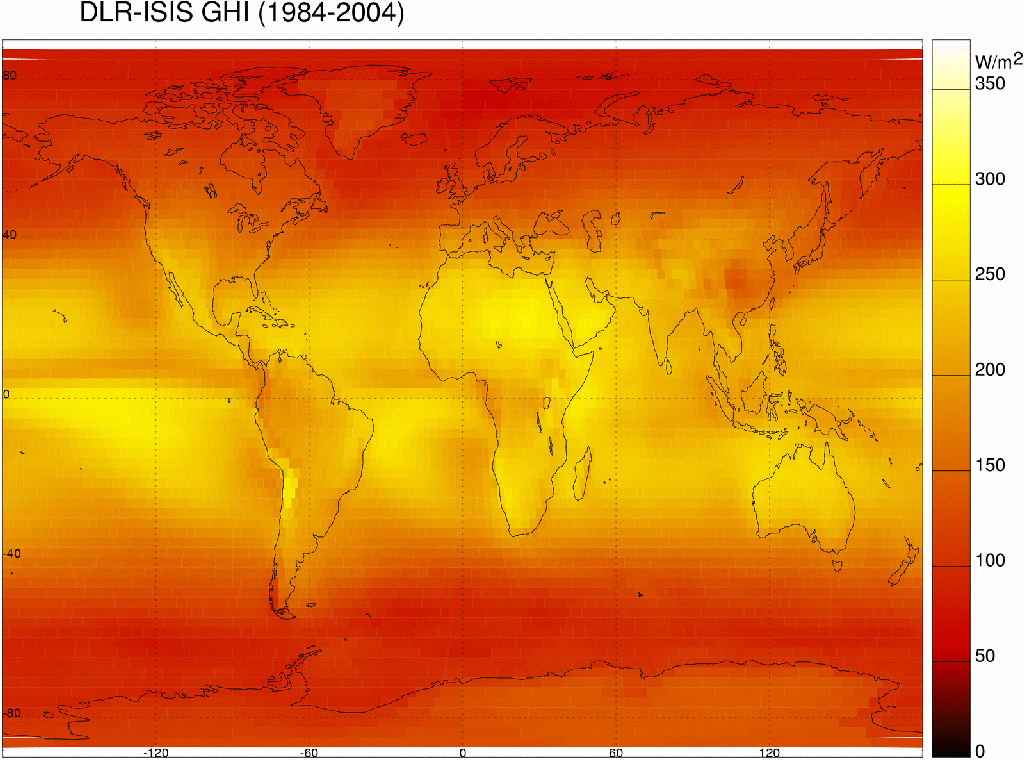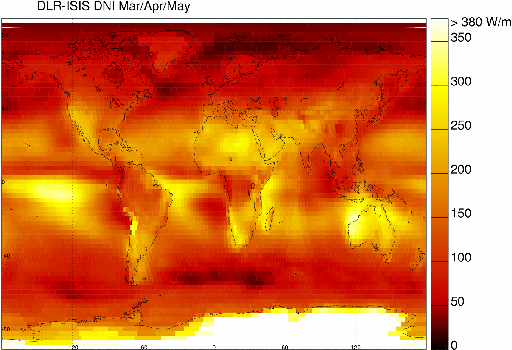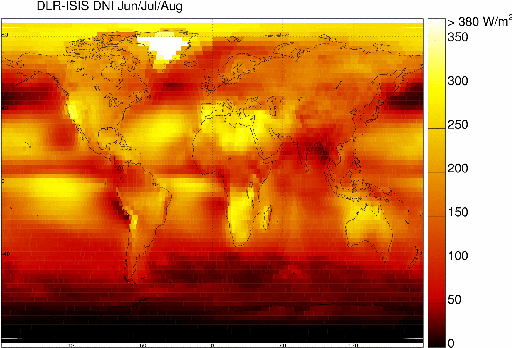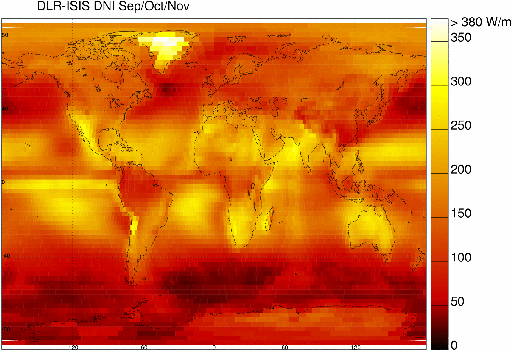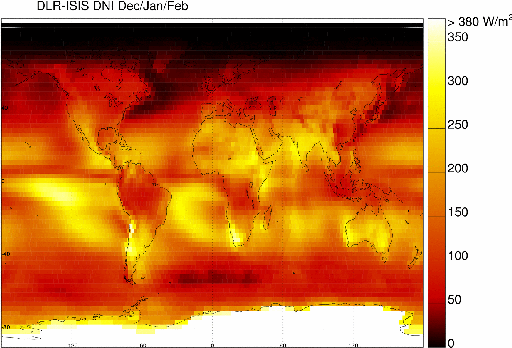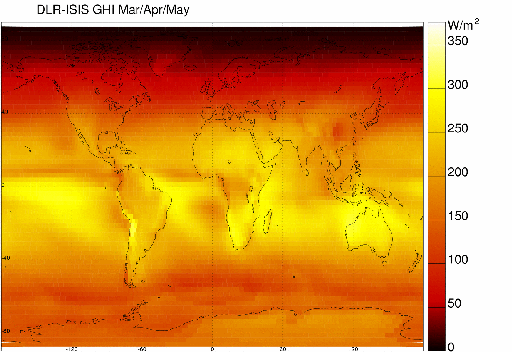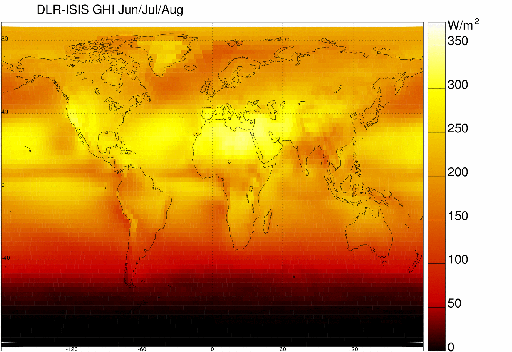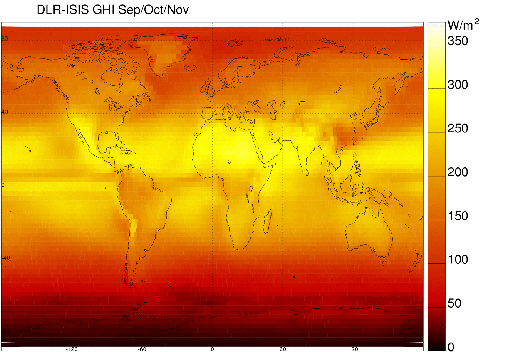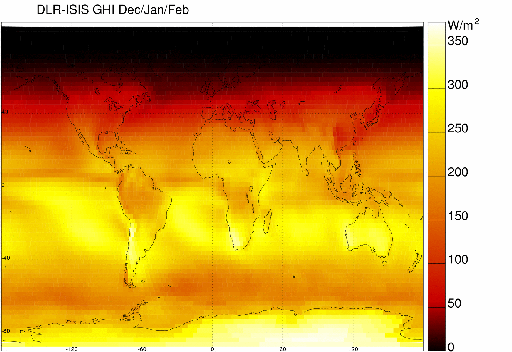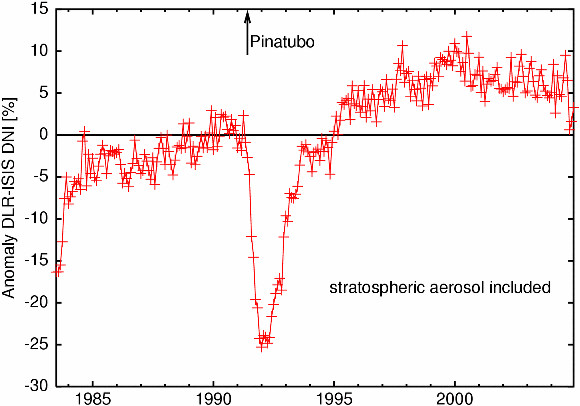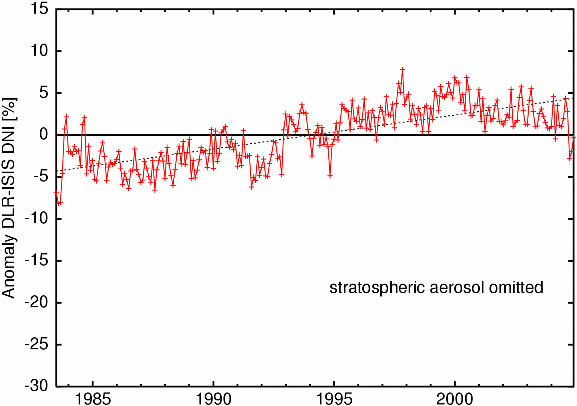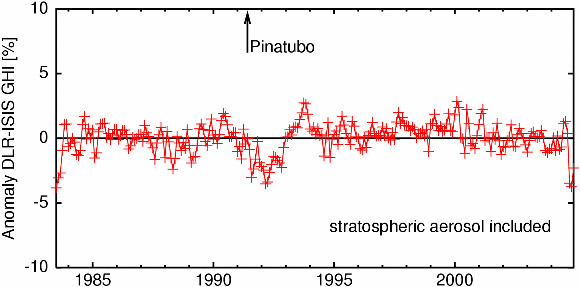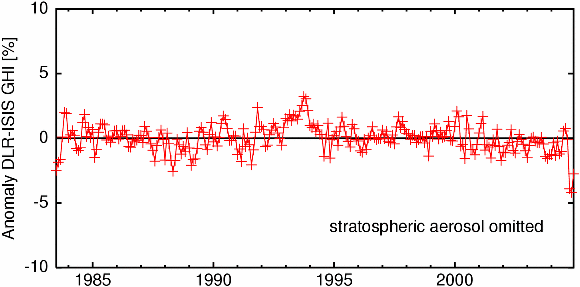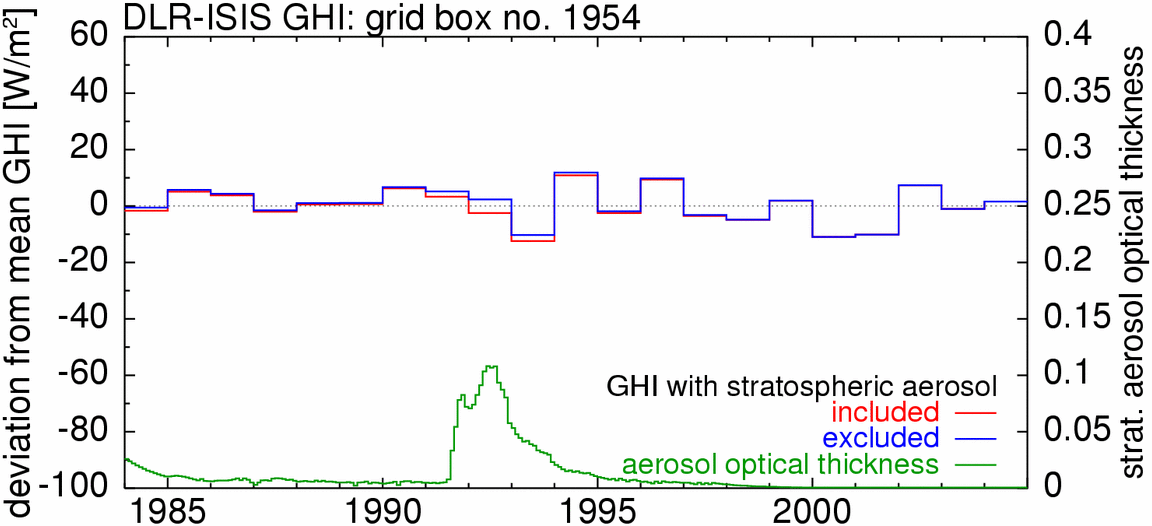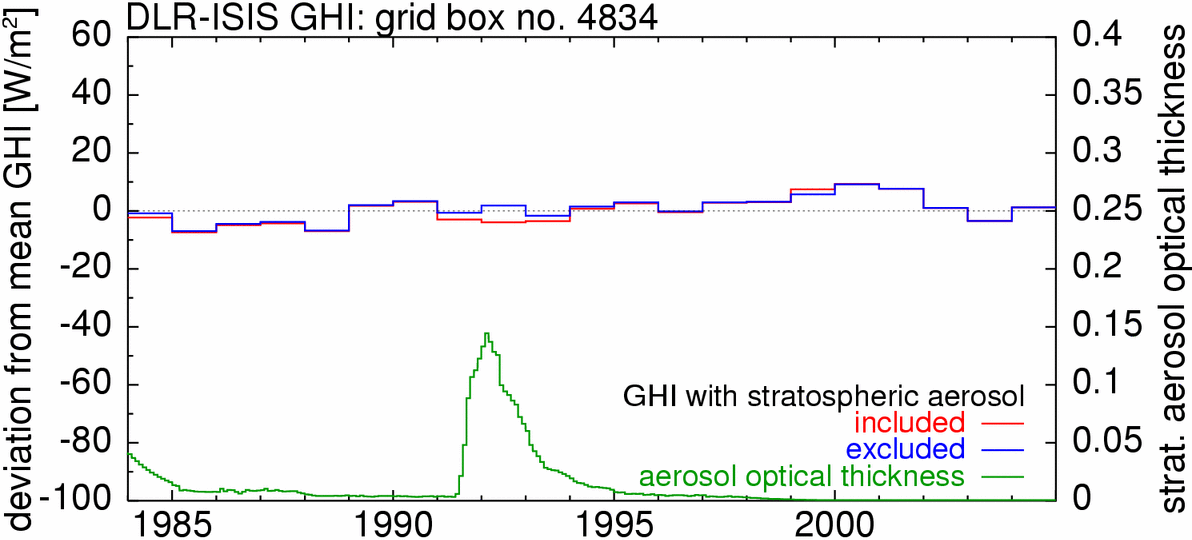Global maps and several examples of time series of DLR-ISIS data are presented below. The corresponding sample data for the time series can be downloaded on this website. For further data access, please contact the DLR-ISIS team. The dataset is provided freely for research purposes. For non-scientific usage a handling fee will be charged.
Annual averages of irradiance (1984-2004)
DNI is much more
sensitive to clouds, therefore, typical cloud situations lead to very low
average DNI, e.g. in the zone of westerly winds over the southern polar
ocean, or to very high irradiance values, e.g. in deserts or
Antarctica. Therefore, the map of DNI shows a
larger range of irradiances than the map of GHI
(for larger version click on images).The global average of DNI from the DLR-ISIS data is 145 W/m², for GHI a global average of 186 W/m² is derived. Maximum and minimum irradiances are given in the table below.
|
DLR-ISIS DNI |
DLR-ISIS GHI |
|
| global
average |
145 W/m² |
186
W/m² |
| min |
28
W/m²
(Southern Polar Ocean) |
65
W/m²
(Northern Atlantic) |
| max |
376
W/m²
(Antarctica) |
286
W/m²
(Sudan) |
Seasonal averages of irradiance (1984-2004)
Seasonal averages of DNI and GHI show
the typical N-S-variability of solar zenith angle during the year.
However, again DNI is more sensitive to clouds than GHI. Therefore, seasonal
features such as the low irradiance over India due to the monsoon season
or the varying position of the intertropical convergence zone are more
distinct than in the images of GHI.
DLR-ISIS DNI (for larger version click on images)
DLR-ISIS DNI (for larger version click on images)
Anomalies
of global averages
For the images on the left,
stratospheric aerosol was included in the radiative transfer
calculations. The images on the right were produced in a second run
omitting stratospheric aerosol. The eruption of Pinatubo is
indicated in the plots.
The anomaly of DNI shows a very strong decrease after the Pinatubo eruption. The global average of DNI was as much as 25% below the average irradiance values. The GHI plots indicate only a small decrease of GHI after the Pinatubo eruption. Results from both runs differ only up to 5% based on monthly averages.
The plots for DNI show a strong increase of irradiance between 1986 and 2000. Part of this increase is caused by the recovery of the atmosphere after the eruptions of El Chichon (in April 1982) and Pinatubo in June 1991. But results from radiative transfer calculations without stratospheric aerosol also show a strong increase in DNI of 0.4% per year which is highly significant. This increase is caused by a decrease in ISCCP cloud amount. This trend in ISCCP cloud amount is currently subject to ongoing discussions. Future studies will have to show whether this is an artefact due to the production of the ISCCP data set or an actual global decrease of cloud amount.
Example time series of DNI and GHI
Time series of DNI show a strong decrease of irradiance after the eruption of Mt. Pinatubo for both examples given above. Results from radiative transfer calculations omitting stratospheric aerosol indicate a annual mean that is on average 19% above values from radiative transfer calculations with stratospheric aerosol. Time series of GHI are barely affected by the eruption, annual means are only 3% lower than in the time series with inclusion of stratospheric aerosol. Comparison of the time series of DNI and
GHI also indicates the very strong year-to-year variability of DNI. On
average, the annual mean of DNI for one year is 7% different from the
values of the year before or after. For GHI, annual means differ only by
3% on average.
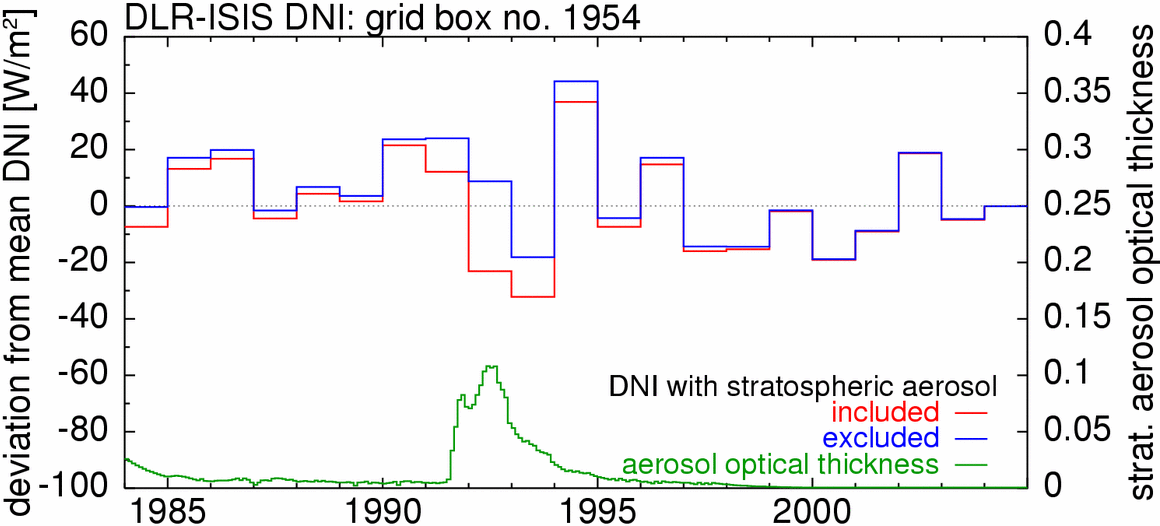
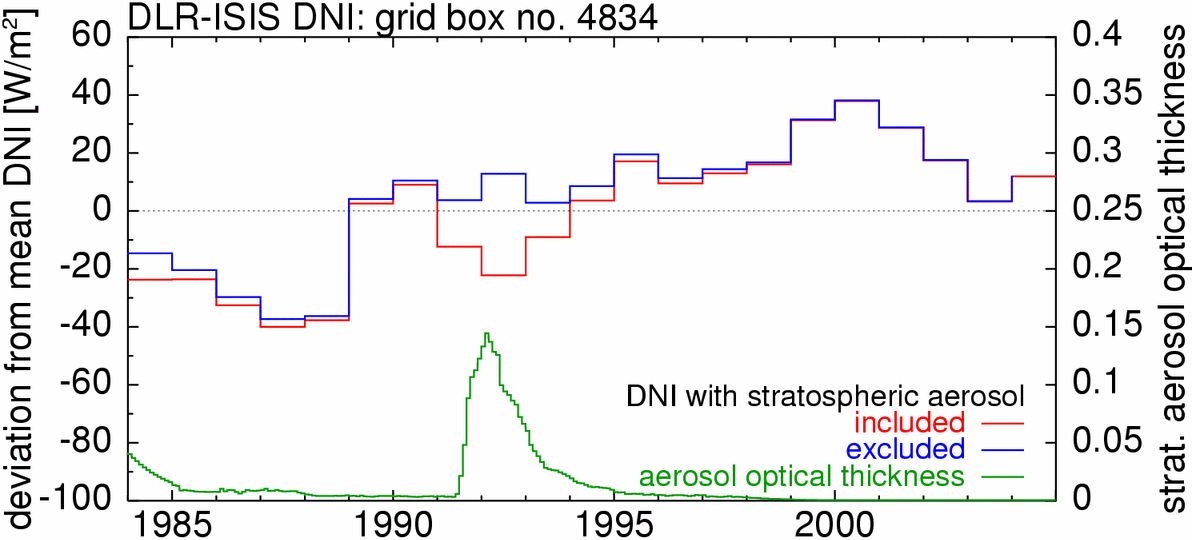
| Example
1 |
Example
2 |
|
| Grid
box no. |
1954 |
4834 |
| location |
Australia |
Near East |
| sample
data |
including
volcanoes: DNI
/ GHI omitting volcanoes: DNI / GHI |
including
volcanoes: DNI
/ GHI omitting volcanoes: DNI / GHI |
